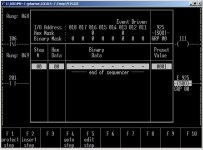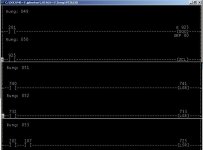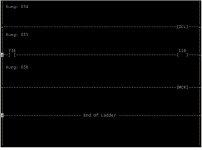spice_miner
Member
I have an old SLC 150 that I have to convert the program to RSlogix 500. There is a SQO that i don't understand.
If you select "display special" on the SQO, it shows zeros in the hex mask for I/O 16 and 13. Maybe somebody can explain this to me. I'll post a screen shot of the SQO and the ladder logic..and post the whole file. Thanks.



If you select "display special" on the SQO, it shows zeros in the hex mask for I/O 16 and 13. Maybe somebody can explain this to me. I'll post a screen shot of the SQO and the ladder logic..and post the whole file. Thanks.





